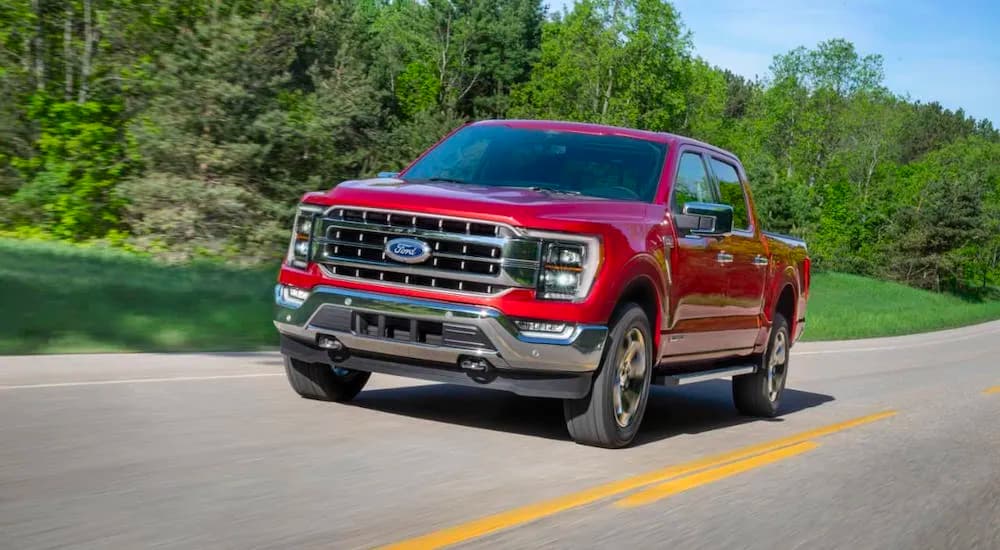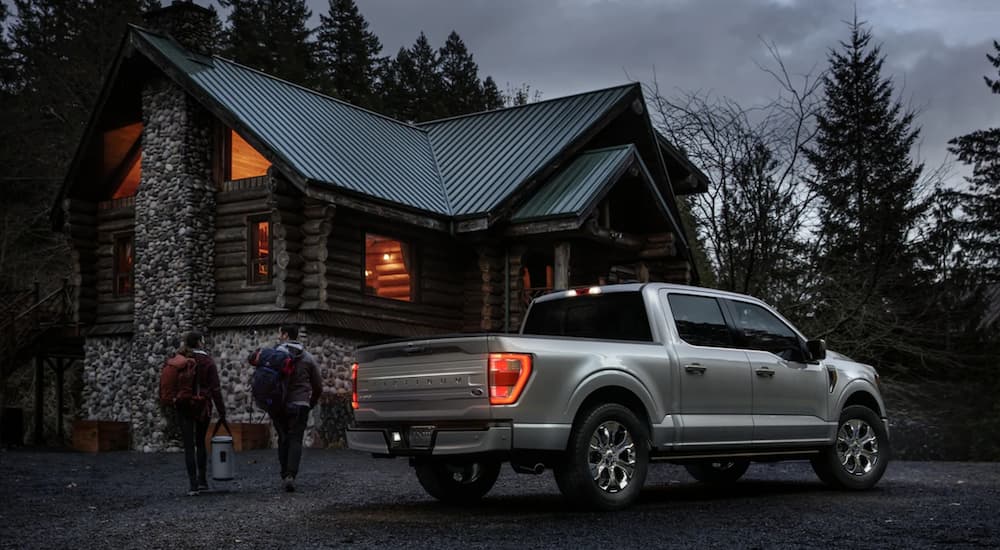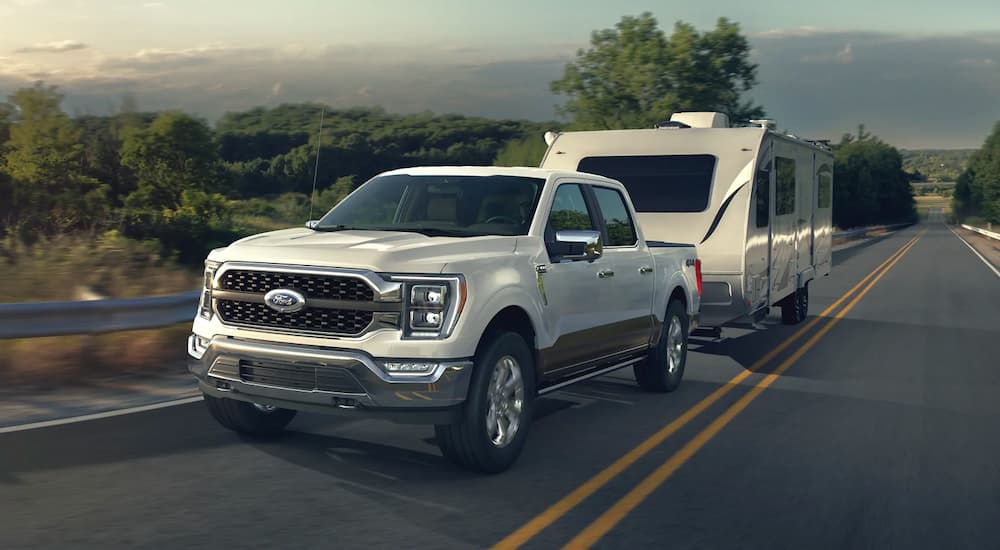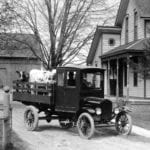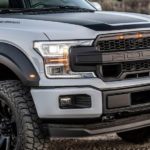When you think about pickup trucks, what comes to mind? For most, it’s a job site or another work-related image. Pickups have long been associated with gritty, messy hard work, and the demographic of the pickup driver centered around tradesmen, ranchers, and other utility-focused individuals. That’s a generalization, but aside from some outliers, the main motivator for choosing a truck like the 2021 Ford F-150 was a need for a truck level of capability.
Now think about a busy suburban parent with 2.5 kids sitting in the carpool line. What is he or she driving? Most of us immediately think of the ubiquitous oversized SUV (or the minivan), and statistically, we wouldn’t be wrong. But every once in a while, a vehicle trend emerges and disrupts the status quo so completely that our ingrained stereotypes begin to seem cartoonish.
Successful parenting relies heavily on life hacks, the best of which are born from necessity. Not too long ago, a harried family in a typical suburban community headed down to the local Ford dealer to pick out a new SUV and ended up leaving in a pickup truck instead. Little did they know that this seemingly innocuous decision was about to transform suburban driveways everywhere.
Welcome to the Pickup-As-Family-Car Era
As parents, we know a thing or two about repetition. Wake up, eat breakfast, scramble for the door, drive, work, drive, eat, sleep, and repeat. Families just keep getting busier, thanks to an endless loop of errands, school, and kid activities. Most households are dual income too, which means mom and dad are juggling careers around the exhausting daily volume of kid business.
Having kids also means carting around a lot of gear. Ask any family with kids in sports, and they’ll tell you that gear bags are just as common as backpacks. What about weekend family outings? Add 3-4 bicycles or a stack of skis and snowboards, and that family SUV is crammed full. We salute the young ones stuck in the way back, knees-to-chin to accommodate six containers of grocery store cupcakes stacked on the floor for that evening’s team party.
Even the largest SUVs – also known as sport utility vehicles – are proving too small for a lot of families. With a full stack of kids, cargo space is usually reduced to sedan-like proportions, leaving parents to engage in a sweaty game of Tetris before every outing. Suddenly, the dimensions and architecture of the full-size pickup begin to make sense, especially if weekend road trips or DIY home projects are frequent leisure-time pursuits.
Pickup truck sales continue to increase in America, with Ford trucks dominating in every size category. The F-Series is a 43-year best-seller, and its smaller sibling, the Ranger, isn’t far behind. In 2019, Ford sold nearly 1,000,000 pickup trucks, more than any other manufacturer and more than GM’s Chevy and GMC nameplates combined. As a category, over 3,000,000 pickup trucks were sold in 2019.
Pickup Truck Utility and Luxury Car Appointments
The term ‘luxury pickup’ used to be an oxymoron: no more, say manufacturers like Ford. In fact, upper-level trims of the 2021 F-150 receive so many high-end luxury features that the existence of a truck bed is the only visible evidence that these vehicles are still pickup trucks. We won’t sugarcoat it: well-equipped luxury-level F-150’s aren’t cheap, but neither are fully-loaded SUVs, and trucks will almost always offer more utility by virtue of their unique architecture.
Buyers will shell out over $70,000 for a 2021 F-150 Limited, Ford’s most luxurious trim offering, but for that, they’ll be hard-pressed to find a bell or a whistle missing from the extraordinarily high-end cabin. The Limited features ambient lighting, dual-zone automatic temperature control, a massive 12-inch infotainment touchscreen that runs on Ford’s lightning-fast SYNC 4 operating system, and an 18 speaker concert grade Bang & Olufsen premium sound system.
These are not the types of appointments one expects to see in a pickup, but this is no ordinary pickup. To be clear, Ford still includes the humble two-door regular cab work truck in the F-150 lineup. This bare-bones offering retails for under $30,000 and features a more traditional spartan cabin layout replete with manual door locks. You know this truck is stripped down when one of its key features, as described by Ford, is fade-to-off interior lighting.
When considering the pickup truck as a replacement for an SUV, it’s not the work truck configuration that fits: families transitioning into the pickup segment need the overlap of an upscale interior to bridge the culture gap. Opting for a pickup-as-family-car is still a novel concept. For those on the fence, the tipping point is usually reassurance that ride quality and comfort/convenience won’t be diminished.
Ride Handling and Safety
Another key component of any proper family car is safety, and second to that, ride quality. Traditional pickup trucks delivered a more rustic traveling experience due to powertrains designed more for muddy off-roading than in-town mom business. The F-150 builds in a continuous damping system that allows drivers to select different drive modes, like Tow/Haul. The system senses road conditions and load levels and adjusts to provide smooth acceleration and precise steering.
The drive modes, which include Normal, Eco, Sport, Tow/Haul, Slipper, and Trail on 2WD models, are surprisingly intuitive and characteristically true to their names, so after a little onboarding, most moms and dads develop a feel for how to optimize them for daily driving. Ford also offers an optional 3.5-liter Hybrid V6 engine to overcome fuel economy objections. Going hybrid doesn’t diminish power or capability, as the engine delivers 430 horses and 570 lb-ft of torque.
Safety features are as plentiful as bed space on the 2021 F-150. Buyers even get treated to the futuristic BlueCruise feature, a hands-free cruise control system that works on roughly 100,000 miles of connected roads and highways. Upper-level trims also receive an intricate 360-degree surround-view camera system that increases visibility for drivers right when they need it, including backing up, navigating into a tight parking space, or even hooking up a trailer.
Multiple additional driver-assist systems use the many onboard cameras and sensors, as well as radar, to constantly monitor activity around the truck and alert the driver to any potential hazards. These systems work together to help new pickup drivers acclimate to size and ride height differences simply and confidently. Thanks to the 12-inch touchscreen, exterior camera views are displayed prominently for drivers, eliminating so much of the guesswork of handling the added heft of a pickup.
Pickup Trucks Are the Newest Suburban It Vehicle
Is this new wave of pickup truck buyers a sign that SUV sales are going to plummet? Probably not. While the trend seems to be picking up steam, most families are still opting in on a more familiar full-size SUV. Time will tell whether pickup truck body styles catch on en masse, but for now, a contingent of early adopters are happily dotting carpool lines with F-150s amongst the sea of familiar vanilla utes.
What is universal is the quest for simplicity, especially for parents. Efficiency is key for a well-run household, and with so many families living busy, active lives, the family vehicle is the glue that holds it all together. Can the mighty pickup be the key to a more efficient family transportation strategy? We wouldn’t bet against it.
